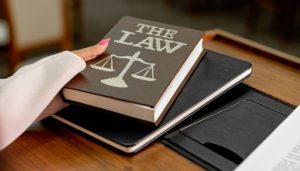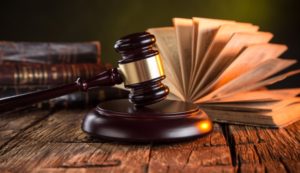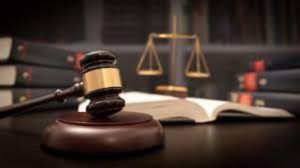
In recent years, the concept of transparency has become increasingly important in our society. People demand openness and accountability from their governments and public institutions. One such example is the Bay Area Transparency Lawsuit, which aims to ensure transparency and uphold the principles of good governance. This article delves into the details of the lawsuit, highlighting its significance, the challenges faced, and the potential outcomes.
Created with AIPRM Prompt “Human Written |100% Unique |SEO Optimized Article”
Bay Area Transparency Lawsuit: Shedding Light on Government Accountability
Introduction
In recent years, the concept of transparency has become increasingly important in our society. People demand openness and accountability from their governments and public institutions. One such example is the Bay Area Transparency Lawsuit, which aims to ensure transparency and uphold the principles of good governance. This article delves into the details of the lawsuit, highlighting its significance, the challenges faced, and the potential outcomes.
Table of Contents
- What is the Bay Area Transparency Lawsuit?
- Historical Background
- The Importance of Government Transparency
- Challenges to Transparency in the Bay Area
- Initiating the Lawsuit: Objectives and Motivations
- Key Players and Organizations
- Legal Processes and Court Proceedings
- Implications for Government Accountability
- Potential Outcomes and Impact
- Public Reaction and Support
- The Role of Media and Public Discourse
- Lessons Learned and Best Practices
- The Future of Transparency and Accountability
- Conclusion
- Frequently Asked Questions (FAQs)
1. What is the Bay Area Transparency Lawsuit?
The Bay Area Transparency Lawsuit is a legal action taken against government entities in the Bay Area to promote transparency and ensure that public officials are held accountable for their actions. It aims to shed light on the decision-making processes, finances, and activities of these entities, fostering a culture of openness and trust.
2. Historical Background
Transparency has always been a cornerstone of democracy, enabling citizens to participate in governance and hold their elected representatives responsible. However, in recent years, concerns have arisen regarding the lack of transparency in the Bay Area. The accumulation of power, bureaucratic opacity, and instances of alleged corruption have prompted concerned citizens to take action.
3. The Importance of Government Transparency
Government transparency is crucial for a well-functioning democracy. It allows citizens to understand how decisions are made, how public funds are allocated, and how their elected officials are performing. Transparency promotes trust, enhances public participation, and prevents the abuse of power. It ensures that governments are accountable to the people they serve.
4. Challenges to Transparency in the Bay Area
While transparency is a desirable goal, achieving it can be challenging. In the Bay Area, several factors contribute to the lack of transparency. Complex bureaucratic processes, inadequate access to information, and resistance from those in power create obstacles that impede public scrutiny. Overcoming these challenges requires a concerted effort from concerned citizens and organizations.
5. Initiating the Lawsuit: Objectives and Motivations
The Bay Area Transparency Lawsuit was initiated with the primary objective of holding government entities accountable and ensuring transparency. Motivated by a shared concern for the lack of openness, the plaintiffs seek to uncover hidden information, challenge secretive practices, and establish a precedent for transparency in the region.
6. Key Players and Organizations
The lawsuit involves various key players and organizations dedicated to promoting transparency. These include concerned citizens, advocacy groups, legal experts, and journalists. Together, they form a coalition aimed at pursuing justice, exposing wrongdoing, and setting a new standard for government accountability.
7. Legal Processes and Court Proceedings
The legal processes involved in the Bay Area Transparency Lawsuit are complex and multifaceted. Plaintiffs file complaints, present evidence, and engage in court proceedings to substantiate their claims. The courts play a vital role in ensuring a fair and impartial evaluation of the evidence and arguments presented by both the plaintiffs and defendants.
8. Implications for Government Accountability
A successful outcome of the Bay Area Transparency Lawsuit would have significant implications for government accountability. It would establish a precedent that public officials must act transparently, fostering a culture of openness throughout the region. Increased scrutiny and accountability would help prevent corruption, promote ethical behavior, and restore public trust in government institutions.
9. Potential Outcomes and Impact
The potential outcomes of the Bay Area Transparency Lawsuit are twofold. On one hand, a favorable court ruling could result in increased transparency, improved governance, and greater public confidence in the Bay Area’s government entities. On the other hand, an unfavorable ruling may perpetuate the status quo, discouraging future transparency efforts and hindering the path to accountability.
10. Public Reaction and Support
The Bay Area Transparency Lawsuit has garnered significant public attention and support. Many citizens, disillusioned by opaque practices and perceived corruption, view the lawsuit as a necessary step toward restoring transparency and integrity in government. Public demonstrations, online campaigns, and grassroots movements have amplified the demand for accountability and transparency.
11. The Role of Media and Public Discourse
Media outlets play a vital role in shaping public opinion and disseminating information related to the lawsuit. Through investigative journalism, news organizations can uncover hidden facts, expose wrongdoing, and keep the public informed. The coverage generated by the media contributes to the broader public discourse surrounding the issues of transparency and accountability.
12. Lessons Learned and Best Practices
The Bay Area Transparency Lawsuit offers valuable lessons and best practices for promoting transparency and accountability in governance. It underscores the importance of citizen engagement, collaborative efforts, and strategic litigation to challenge systemic opacity effectively. The experiences gained from this lawsuit can serve as a blueprint for future transparency initiatives in other regions.
13. The Future of Transparency and Accountability
The outcome of the Bay Area Transparency Lawsuit will undoubtedly shape the future of transparency and accountability in the region. If successful, it could inspire similar legal actions and fuel a broader movement toward open and accountable governance. However, even if the lawsuit does not achieve its intended objectives, it serves as a reminder of the ongoing struggle for transparency and the need for continued efforts.
14. Conclusion
The Bay Area Transparency Lawsuit represents a significant step toward holding government entities accountable and ensuring transparency in the Bay Area. It highlights the importance of openness, public participation, and ethical governance. Regardless of the outcome, the lawsuit catalyzes change and fosters public dialogue about the principles that underpin a functioning democracy.
Frequently Asked Questions (FAQs)
How can the Bay Area Transparency Lawsuit benefit the community?
The lawsuit aims to benefit the community by promoting transparency, preventing corruption, and holding public officials accountable. It strives to create a culture of openness that restores public trust in government institutions.
Can the Bay Area Transparency Lawsuit set a precedent for other regions?
Yes, the lawsuit can set a precedent for other regions grappling with issues of transparency and accountability. Its outcomes and lessons learned can inspire similar legal actions and initiatives in other parts of the country.
How can individuals support the Bay Area Transparency Lawsuit?
Individuals can support the lawsuit by staying informed, engaging in public discourse, and advocating for transparency and accountability in their communities. They can also support organizations working toward these goals and participate in peaceful demonstrations.
What are the potential obstacles faced by the Bay Area Transparency Lawsuit?
The lawsuit faces potential obstacles such as bureaucratic resistance, lack of access to information, and challenges in proving allegations of wrongdoing. Overcoming these obstacles requires persistence, legal expertise, and collective action.
Where can I get more information about the Bay Area Transparency Lawsuit?
For more information about the Bay Area Transparency Lawsuit, visit our website [link] or refer to reputable news sources covering the developments of the lawsuit.
In conclusion, the Bay Area Transparency Lawsuit serves as a powerful reminder of the importance of government accountability and transparency in a functioning democracy. By shedding light on opaque practices and challenging secretive behavior, the lawsuit seeks to create a more open and accountable government for the Bay Area community. The road to transparency may be challenging, but with persistent efforts and public support, it is possible to achieve a system that truly serves the interests of the people.






